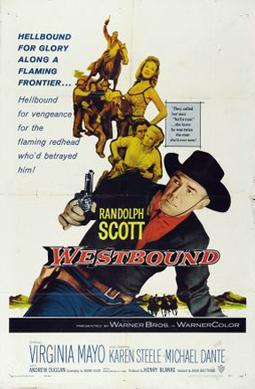O.E. Rolvaag (1876-1931) was born in a small fishing village in northern Norway about five miles from the Arctic Circle. In 1896 he immigrated to South Dakota to work on his uncle's farm. He later enrolled in St. Olaf College in Northfield, Minnesota, graduating with a bachelor's degree in 1905, and becoming a professor of Norwegian literature at the school the following year. In 1910 he earned a master's degree at St. Olaf.
Two years earlier, he had become an American citizen
and had married Jennie Marie Berdahl. They would have three sons and one
daughter. One of the sons, Karl, would become
governor of Minnesota in the 1960's.
All of Rolvaag's books were written and originally
published in his native Norwegian language and were then translated into
English. They were popular in both
Norway and the United States.
He published the first of his six novels in 1912. But it was in 1927 that his masterpiece, Giants in the Earth, was translated and
published in America. It is a classic
study of the immigrant experience in America and even more so the classic book about the Norwegian
immigrant experience.
It is a book about the reality of contending with the
harsh elements that characterized the South Dakota plains -- drought, locust
swarms, blizzards, and, especially for women, loneliness, isolation, and often
despair. And the wind -- always the wind
-- and the flat, treeless plain, where there was a
[b]right, clear sky
over a plain so wide that the rim of the heavens cut down on it around the
entire horizon. . . . Bright, clear sky, to-day, to-morrow, and for all time to
come.
. . . And sun! And
still more sun! It set the heavens afire every morning; it grew with the day to
quivering golden light--then softened into all the shades of red and purple as
evening fell. . . . Pure colour everywhere. A gust of wind, sweeping across the
plain, threw into life waves of yellow and blue and green. Now and then a dead
black wave would race over the scene . . . a cloud's gliding shadow . . . now
and then. . . .
It was late
afternoon. A small caravan was pushing its way through the tall grass. The
track that it left behind was like the wake of a boat--except that instead of
widening out astern it closed in again.
Yes, as in the rest of the West, life was harder for
women. Men tended to be optimistic that
whatever the obstacles might be, they could be overcome. And sometimes it was necessary for them to
travel many miles to the nearest town in order to purchase necessary equipment
and supplies. But the women remained at
home to care for their children and tend the livestock and they rarely saw anyone
outside of the family.
There are stories of how the monotony of this existence
drove women out of their minds. And in
one case in Giants in the Earth it
does that very thing.
Two years later, a sequel, Peder Victorious: A Tale of the Pioneers Twenty Years Later, was published. Whereas Giants in the Earth was epic in scope, the sequel narrowed its
focus. There were still occasional
droughts and harsh winters, but because of the growth of population in the
ensuing years the isolation and monotony had lessened as did the despair. The land had been conquered.
The great struggle now became one of how to become
Americans. And an essential element of
that struggle was the pain and dismay among the immigrants who resisted but
could not prevent the Americanization of their first-generation children. This struggle is at the heart of the story of
young Peder Holm and his Norwegian mother, Beret.
Two years after Peder
Victorious, the third book of the trilogy was published. Their
Fathers' God begins in the late 1890's and extends into the new
century. The farmers of the South Dakota
plains have to contend with a long drought and, like the rest of the country,
with an economic depression. But there
is another struggle, one that is much more deep-seated and more lasting than
the others. It is the division that
exists between two groups of immigrants, the Norwegian Lutherans and the Irish
Catholics.
The two groups are able to live as accommodating
neighbors as long as -- well, as long as each is able to maintain its own
culture, including language, but especially religion, without any interference
from the other; and as long as there is no intermarriage between Protestants
and Catholics.
But there is that. Peder Holm, the young rebel from the second book, has married Susie
Doheny, a devout Catholic. Peder thinks
the Catholic religion is no more than myth and superstition and he probably
could live with that except he and his young wife live on the farm and in the
house owned by his mother, Beret, who is as devout in her Lutheran faith as her
daughter-in-law is in her faith.
Peder, of course, has been raised in the Lutheran
church, but in truth he opposes any organized religion. But he is caught in the middle. Soon his marriage is being severely tested. It is tested not only by drought and
depression, but even more troublesome it is tested by family bickering, and
maybe, as Susie believes, it is being tested by their father's god.
There might have been a fourth book in the series. In fact, the conclusion of Their Fathers' God would seem to point in that direction. But it was not to be. O.E. Rolvaag died the year that book was published. He was fifty-five years old.

![[t3.jpg]](https://blogger.googleusercontent.com/img/b/R29vZ2xl/AVvXsEg14qsxbJ97_BANJLjl5tByx6_e9BPnnq6s74NfYNy0hKU63Pc08JLIFWJ8j-n7KMRPMNAJLncRqwPPibAsmngpt7EZQKsIu2Nm0-ALtTtd5GvG70BEQhNPepQfZ0oHoX5koIbyWJ9RVTw/s400/t3.jpg)















.jpg)






